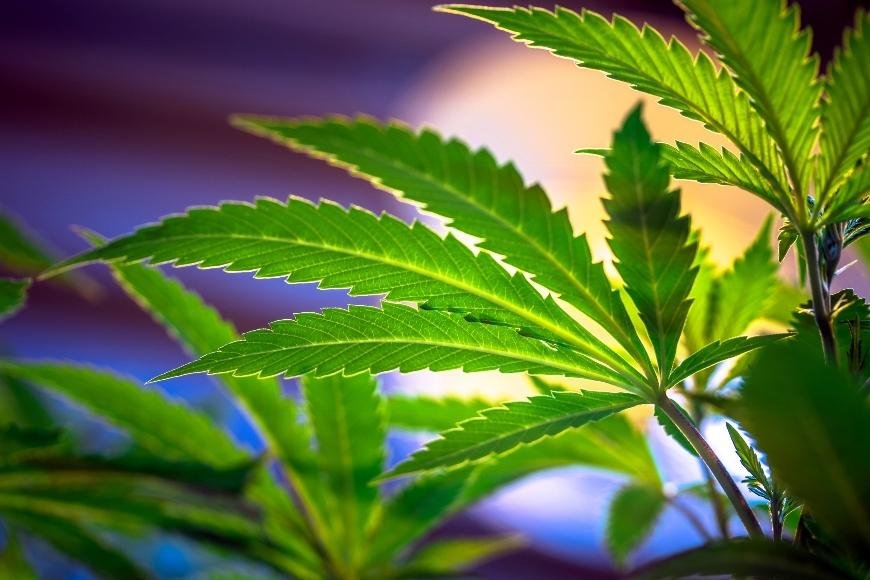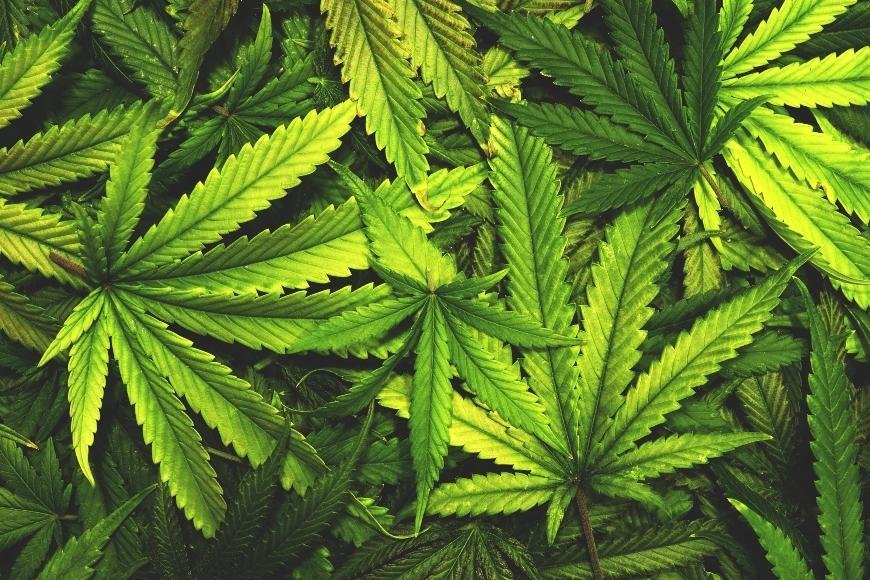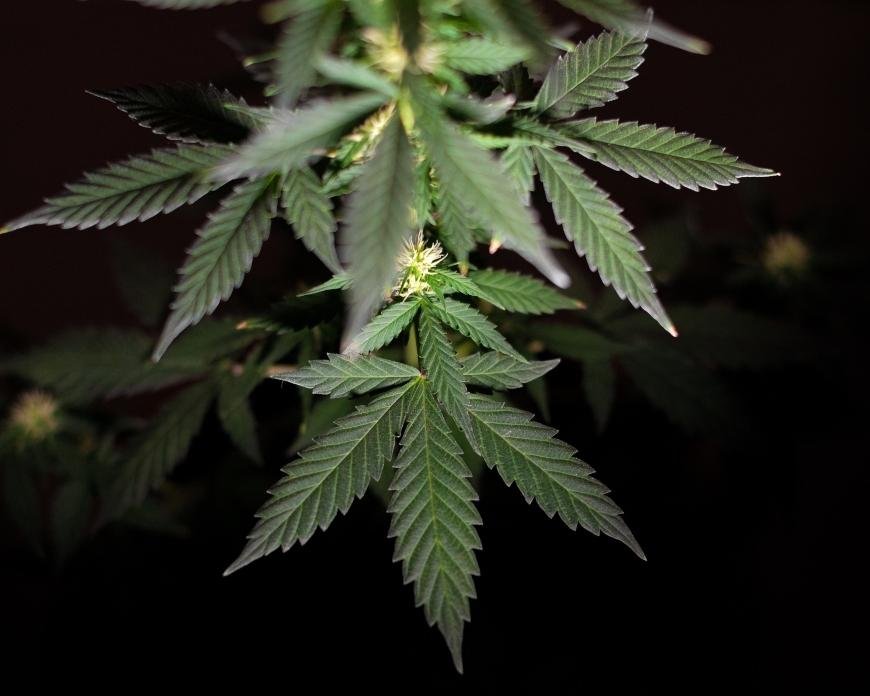How to Fix Molybdenum Deficiency in Cannabis Plants
Discover how to fix molybdenum deficiency in cannabis plants with our guide on identifying symptoms, adjusting pH levels, and choosing the right fertilizers.

How to fix molybdenum deficiency in cannabis plants is a crucial aspect of ensuring healthy growth and optimal yields. This guide will explore the necessity of molybdenum for cannabis cultivation, with a focus on its part in nitrogen fixation and transforming nitrates into amino acids.
As you read further, you'll learn how to identify the symptoms of molybdenum deficiency through visual signs and understand the effects cold weather can have on these symptoms. We will also discuss the causes and contributing factors for this deficiency such as low pH levels causing nutrient lockout or excessive iron content competing with molybdenum absorption.
In our quest to teach you how to fix molybdenum deficiency in cannabis plants, we will provide effective solutions like drying out your plants before treatment, flushing them with pH-balanced water, adjusting soil/growing medium pH levels, using appropriate fertilizers containing molybdate salts and foliar sprays specifically designed for addressing deficiencies. Lastly, we'll emphasize monitoring plant health regularly by using high-quality substrates for early detection and prevention of future deficiencies.
Table of Contents:
- Importance of Molybdenum in Cannabis Growth
- Nitrogen Fixation Process
- Conversion of Nitrates to Amino Acids
- Identifying Molybdenum Deficiency Symptoms
- Causes and Contributing Factors
- Fixing Molybdenum Deficiencies Effectively
- Fertilizers and Soil Amendments for Molybdenum Deficiency
- Monitoring Plant Health and Preventing Future Deficiencies
- Frequently Asked Questions How to Fix Molybdenum Deficiency in Cannabis Plants
- Conclusion
Importance of Molybdenum in Cannabis Growth
Molybdenum is a trace mineral that plays a crucial role in the growth and development of cannabis plants. It's involved in essential processes such as nitrogen fixation and the conversion of nitrates to amino acids. These processes are vital for healthy plant growth, proper flower formation, and seed development. A deficiency in molybdenum can result in stunted growth, yellowing leaves (chlorosis), reduced flowering, and even permanent damage to your marijuana plants.
Nitrogen Fixation Process
The process of nitrogen fixation involves converting atmospheric nitrogen into ammonia or other forms that can be utilized by plants. This process is vital for cannabis plants as it furnishes them with an available source of nitrogen, a fundamental nutrient necessary for their development. Molybdenum acts as a cofactor for enzymes like nitrogenase, which play critical roles during this conversion process.
Conversion of Nitrates to Amino Acids
In addition to its involvement in nitrogen fixation, molybdenum also helps convert nitrates into amino acids within cannabis plants. This conversion is necessary because amino acids serve as building blocks for proteins - key components responsible for various structural and functional aspects within plant cells. The enzyme nitrate reductase requires molybdenum as a cofactor; without sufficient levels present, this enzymatic reaction becomes impaired leading to potential issues such as nitrogen deficiency.
- Tip: To ensure optimal nutrient uptake by your cannabis plants, maintain appropriate pH levels around their roots. This will help avoid molybdenum deficiency and other nutrient-related issues.
Molybdenum is an essential trace mineral for the health and growth of cannabis plants, so it's important to ensure they receive adequate amounts. Ensuring that they receive adequate amounts of this trace mineral is crucial for their success. In the following sections, we'll discuss how to identify symptoms of molybdenum deficiency and provide tips on fixing it effectively.

Identifying Molybdenum Deficiency Symptoms
Molybdenum deficiency in cannabis plants can be challenging to diagnose, as its symptoms often resemble those of other nutrient deficiencies. However, there are some specific visual signs that you can look for to accurately identify this issue and take prompt action.
Visual Signs of Deficiency
Leaves may show orange-red or pink coloration around the edges, veins and petioles, as well as chlorosis - a yellowing pattern in the middle with green margins. This discoloration may also appear on leaf veins and petioles. Another telltale sign is chlorosis - a yellowing pattern that strikes the middle portion of foliage while leaving green margins intact. As the deficiency progresses, affected leaves might develop brown crispy fringes along their margins, eventually curling upward and dying off.
- Orange-red or pink color: Look for unusual hues around leaf edges and veins.
- Chlorosis: Check for yellowing patterns in the middle portion of foliage with green margins remaining unaffected.
- Brown crispy fringes: Observe any browning or crispiness developing along leaf margins as an advanced stage symptom.
Effects of Cold Weather on Symptoms
Cold weather conditions or sudden temperature swings can exacerbate molybdenum deficiency symptoms in cannabis plants. Low temperatures hinder root function and slow down nutrient uptake processes within plant tissues, making it harder for your marijuana plants to access essential nutrients like molybdenum from their growing medium. To avoid further complications due to cold stress, make sure you maintain consistent temperatures inside your grow room/tent by using heaters when necessary.
It is essential to be conscious of indications and manifestations of molybdenum inadequacy so as to take remedial activity before it advances into a noteworthy issue. Next, we will look at the causes and contributing factors that can lead to this condition.
Causes and Contributing Factors
Understanding these causes will help you prevent and fix molybdenum deficiency effectively, ensuring your marijuana plants grow healthy and strong.
Low pH Levels Causing Nutrient Lockout
A primary cause of molybdenum deficiency can be an overly low pH level at the root system. This issue often occurs among beginner hydroponics growers who administer their nutrient solution with a too low pH value. When the pH level drops below 5.5, it results in nutrient lockout, preventing your cannabis plants from absorbing essential nutrients like molybdenum.
- Ideal soil pH: For optimal absorption of molybdenum, maintain a soil pH between 6.0 - 7.0.
- Ideal hydroponic solution pH: In hydroponic systems, aim for a slightly lower range of 5.8 - 6.5 to ensure proper nutrient uptake.
Excessive Iron Content Competing with Molybdenum Absorption
In addition to low root zone pH levels, excessive iron content within soils may lead to competition between these two elements for uptake by plant roots. Iron overload can block absorption of other trace minerals, like molybdenum or copper, leading to nutrient deficiencies in cannabis plants - an issue that can be avoided with a balanced fertilizer and proper pH levels. To avoid this issue, ensure you use a balanced fertilizer that provides all the necessary nutrients in appropriate ratios.
Managing molybdenum deficiency in cannabis plants can be intricate, yet with the right information and comprehension it is possible to address it successfully. By drying out the plants before treatment, flushing them with pH-balanced water and adjusting soil/growing medium pH levels, you will have taken the necessary steps to fixing molybdenum deficiencies successfully.
Fixing Molybdenum Deficiencies Effectively
Addressing the underlying source of molybdenum deficiency and providing appropriate nourishment to cannabis plants is necessary for successful remediation. Here are some practical strategies for dealing with molybdenum deficiency in marijuana plants:
Drying out Plants Before Treatment
Before treating your marijuana plants, ensure they are not overwatered by allowing them to dry out in soil. Overwatering can contribute to nutrient lockout issues, so giving your plants some time without water can help reset their system and prepare them for proper nutrient absorption.
Flushing Plants with pH-Balanced Water
Next, flush your cannabis plants using pure water that has been balanced at a pH level between 6-7. This will help remove any excess salts or minerals from the root zone while also helping adjust the pH levels around the roots. Flushing is an essential step in correcting nutrient imbalances and ensuring optimal plant health.
- pH Test Strips: You can use pH test strips or digital meters available online or at gardening stores to measure and monitor pH levels accurately.
- pH Up & Down Solutions: To adjust pH levels during flushing, consider using commercial products.
Adjusting Soil/Growing Medium pH Levels
After flushing, it's crucial to adjust the pH levels of your soil or growing medium. Ensuring proper pH levels in cannabis cultivation is essential for avoiding nutrient lockout and promoting healthy plant growth. For soil-grown plants, aim for a pH level between 6-7; hydroponic systems typically require slightly lower pH values ranging from 5.5-6.5.
In addition to these steps, monitor your grow room temperature and make adjustments as needed using heaters or fans to prevent cold weather-related issues that can exacerbate molybdenum deficiency symptoms.
By following the above steps, you can effectively fix molybdenum deficiencies in your cannabis plants. Now, we'll explore some possible fertilizers and amendments to help tackle this issue.
Fertilizers and Soil Amendments for Molybdenum Deficiency
Growers can use fertilizers containing adequate amounts of molybdate salts or apply foliar sprays/mixtures made from hydroponic micronutrients specifically designed to address this issue promptly. Ensure you maintain balanced nutrient levels throughout your grow cycle, as excessive amounts of molybdenum can cause deficiencies in copper or iron.
Types of Fertilizers Containing Molybdate Salts
To address a molybdenum insufficiency in cannabis plants, the right fertilizer must be chosen. Some popular options include:
- Ammonium Molybdate: A water-soluble source that provides both nitrogen and molybdenum.
- Sodium Molybdate: Another soluble option suitable for soil applications and foliar sprays.
- Mixed Micronutrient Fertilizer: Products like General Hydroponics MaxiGro contain trace elements, including molybdenum, which help ensure well-rounded nutrition for your cannabis plants.
Foliar Sprays and Mixtures for Addressing Deficiency
In addition to using appropriate fertilizers with molybate salts, growers may also opt for foliar sprays that directly provide the deficient element to plant leaves.
Remember that fixing a molybdenum deficiency in cannabis plants requires patience and consistency. Regularly monitor your plants' progress after applying fertilizers or foliar sprays containing molybate salts, making any necessary adjustments as needed. By maintaining balanced nutrient levels throughout your grow cycle, you can prevent future issues related to excessive amounts of molybdenum causing copper or iron deficiencies.

Monitoring Plant Health and Preventing Future Deficiencies
Investing in high-quality substrates and nutrients from the beginning is crucial to avoid micronutrient deficiencies altogether. Regular monitoring, adjustments, maintaining healthy root zones, and addressing any potential problems like molybdenum deficiency effectively before they escalate into more severe complications will ensure healthier plant growth and maximum yields.
Importance of High-Quality Substrates
Selecting a suitable substrate for your cannabis plants plays a significant role in their overall health. A well-draining medium with proper water retention capabilities can help maintain an ideal environment for nutrient absorption. Some popular options include coco coir, peat moss mixes, or even hydroponic systems that allow precise control over pH levels and nutrient delivery.
Regular Monitoring for Early Detection
- Nitrogen deficiency: Keep an eye out for yellowing leaves at the bottom of the plant which may indicate nitrogen issues.
- pH levels: Test your soil or growing medium regularly to ensure optimal pH ranges are maintained (between 6-7).
- Molybdenum deficiency symptoms: Look out for visual signs such as orange-red or pink color around leaf edges or chlorosis striking the middle portion of foliage with brown crispy fringes on leaf margins.
By taking these steps and ensuring you address any potential nutrient issues promptly, your cannabis plants will thrive, providing you with the best possible yields. Remember that prevention is always better than cure, so stay proactive in monitoring plant health and making necessary adjustments as needed.
Frequently Asked Questions How to Fix Molybdenum Deficiency in Cannabis Plants
How do you fix molybdenum deficiency in plants?
To fix molybdenum deficiency in cannabis plants, start by flushing the growing medium with pH-balanced water. Then, adjust the soil or growing medium's pH levels to be slightly more alkaline (6.0-6.5 for soil and 5.5-6.2 for hydroponics). Finally, supplement your plant with a balanced nutrient solution containing trace amounts of molybdenum.
What causes molybdenum deficiency in cannabis?
Molybdenum deficiency in cannabis is often caused by low availability due to acidic soil conditions or competition with other nutrients like copper and sulfur. It can also result from using poor-quality substrates or imbalanced nutrient solutions that lack sufficient micronutrients.
What does molybdenum do for cannabis plants?
Molybdenum plays a crucial role in nitrogen fixation and conversion of nitrates to amino acids within cannabis plants, promoting healthy growth and development throughout their lifecycle.
Can cannabis recover from nutrient deficiency?
Cannabis can recover from nutrient deficiencies if promptly diagnosed and treated appropriately; however, severe cases may lead to stunted growth or reduced yields even after corrective measures are taken.
Conclusion
To sum up, molybdenum is indispensable for cannabis cultivation since it is essential to the nitrogen-fixing process and transforming nitrates into amino acids. Identifying deficiency symptoms through visual cues and soil testing methods can help growers fix any issues effectively by adjusting pH levels, flushing with pH-balanced water, and correcting imbalances in growing conditions.
Preventing excessive molybdenum intake and competition with other nutrients is also important for healthy plant growth and maximum yields. By choosing quality substrates and nutrients while regularly monitoring root zone health, growers can ensure their plants receive optimal nutrition.



























































































































